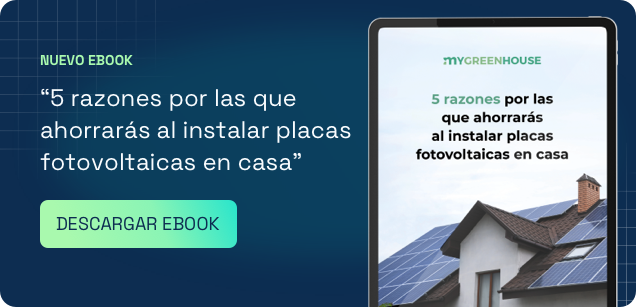Have you ever wondered whether the orientation of the solar panels is important when setting up a photovoltaic installation? If so, you have come to the right place!
When we’ve decided to install photovoltaic panels at home or in our business, we need to consider all the factors that could affect the installation’s performance.
The two most important factors are the surface area available on the roof (the more space, the greater the power and the greater the energy production) and the geographical location. Although you can install photovoltaic panels anywhere in Spain, the central and southern areas have higher average levels of annual solar radiation, and so the yield obtained by a solar installation in those places will be higher.
There’s also an additional factor – orientation – which is very important to bear in mind when setting up a solar self-consumption project, as we’ll explain below.
Why is the orientation of solar panels so important?
The orientation of our photovoltaic panels will either have a positive or negative influence on their performance and will determine whether you are harnessing the sun’s rays to the full or not, in accordance with the region’s geographical position.
The highest solar gain (the greater efficiency) is achieved with south-facing solar panels (Azimuth 180º) and with a correct latitudinal inclination according to the area.
But what does this mean in terms of the yield of the solar installation?
A south-facing solar photovoltaic installation with the correct inclination achieves close to a 100% yield. If the panels face directly east or west, they produce approximately 20% less energy, while if they are tilted completely vertically, they will often produce up to 50% less electricity.
Of course, you will still save money even with an incorrectly-oriented or tilted self-consumption installation, but you will have to install more panels to cover your electricity needs.
In fact, when a house is facing north and it isn’t possible to tilt the PV panels in the opposite direction, we recommend that you have them installed with a special mounting that will enable them to tilt in the opposite direction to the inclination of the roof.
On other occasions, you may need to consider the option of mounting the solar installation directly on the ground.
What is the right inclination for solar panels?

The appropriate inclination based on the orientation of solar panels depends on many aspects, such as the type of roof or the region’s latitude.
If the house’s energy consumption is stable all year round, then the recommended degree of inclination for the panels will be the latitude of the area minus 18 degrees in the summer, and latitude plus 18 degrees for winter.
For example, in Valencia, where the latitude is 39 degrees, the panels should be placed at an inclination of 57 degrees in winter and 21 degrees in summer.
Neither should we forget that, in mountainous areas with regular snowfall, roofs are slightly steeper to prevent the snow from accumulating on them, and this can improve their efficiency as a result.
Most other roofs in Spain have a slope of between 20 and 35 degrees. Even though this means that the photovoltaic panels will lose a certain amount of efficiency and yield, you can counteract this by installing a coplanar structure.
How does shade affect the performance of solar panels?
Imagine a situation where we have a perfect tilt and orientation for the solar panels, but there are trees or elements such as chimneys, lampposts or antennas that cast shadows on the panels at certain times of the day. Will this affect their performance?
To start with, when the cells of a PV panel are affected by shade, electricity generation is reduced.
It is also true that solar panels are fitted with diodes that minimise the effects of partial shading in certain areas of the panel. The “problem” is that these diodes work at very low voltages, so the energy loss is still high. Think of the solar panel configuration as a water pipe in which all the cells form a straight line and in which the shade would be equivalent to partially plugging the pipe. The effect would be multiplied the more shaded areas there are.
As experts, our recommendation is that you always look for the ideal orientation for the solar panels and to avoid shade hitting them. This is not always easy, especially in homes where installation space is limited. In this case, the number of panels installed and having a team of professionals calculate the installation’s needs will play a decisive role in covering the home’s energy requirements.


